Mordovia Arena: FC Mordovia Saransk
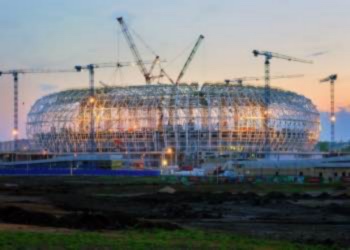
By Павел Протченко (Own work) [CC BY-SA 4.0], via Wikimedia Commons
Mordovia Arena is one of the most interesting stadiums that was built for the 2018 World Cup, hosted by Russia. The very fact that it was chosen at all says as much about the political climate in the country as anything else. Mordovia is not a footballing hotbed like other areas of the nation, yet the region’s deputy head of government, Alexei Merkushin, has a father who is a close friend of Vladimir Putin. That might explain why the area was chosen to host tournament matches in the first place, though it wasn’t an easy ride. Building work began in 2010 but, as with a number of the grounds that were built for the biggest event in international football, it has beset by problems. That included the fact that work stopped completely between 2013 and 2015.
When Russia was putting forward its bid to host the tournament they originally had a design for this stadium created by Tim Hupe, a German architect. When it came to the final design, however, SaranskGrazhdanProekt was chosen as the company to deliver it. FIFA require that grounds have at least 40,000 seats if they are to be used as a host venue for one of their major matches, so the stadium is able to host just shy of 44,500 people during the World Cup itself. After that the capacity will be reduced by removing the upper section of seating and a promenade of shops and leisure spaces being built between the remaining seats and the roof.
Stats
| Mordovia Arena Stats | |
|---|---|
| Year Opened | 2017 |
| Capacity | 44442 |
| Average Attendance | 40049 |
| Record Attendance | 41685 (Iran v Portugal (2018)) |
| Pitch Size | 105x68(7140) |
| Former Name | Stadion Yubileyny |
| Owner | Russian Government |
| Clubs Hosted | FC Mordovia Saransk |
| First Fixture | Peru v Denmark (16/06/2018) |
Mordovia Arena Photos
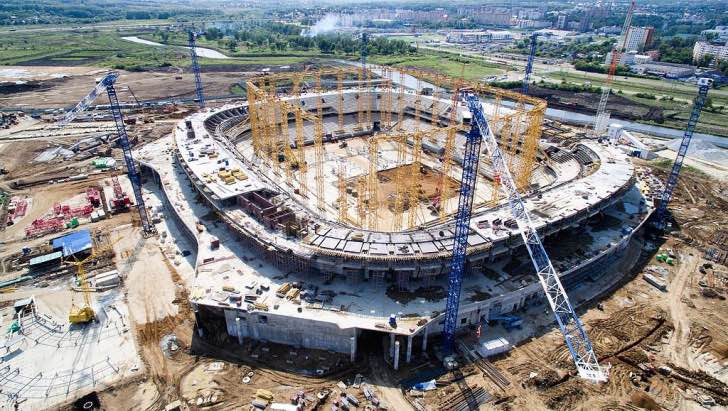
By Kyongwon (Own work) [CC BY-SA 4.0]
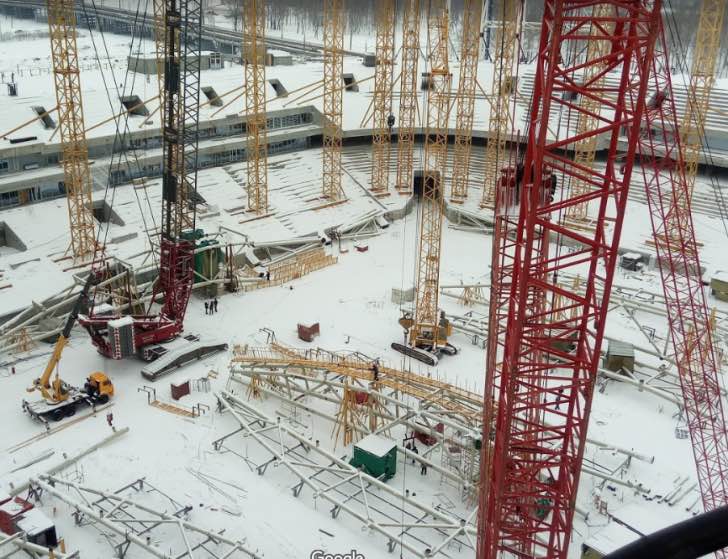
Google Maps / Сергей Елпаев
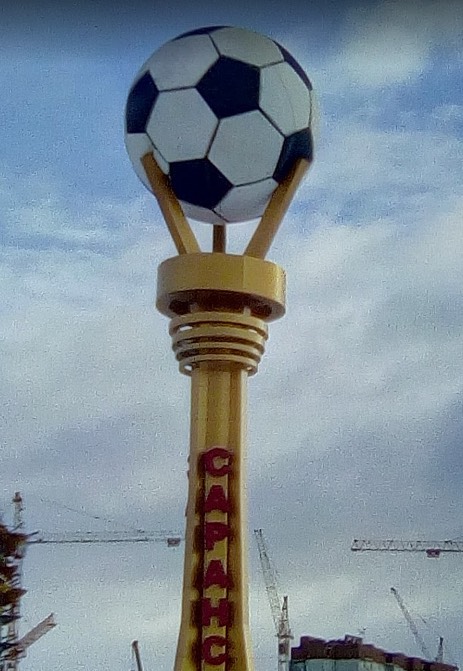
Google Maps / Санечек Йа
Mordovia Arena Seating Plan and Where to Sit
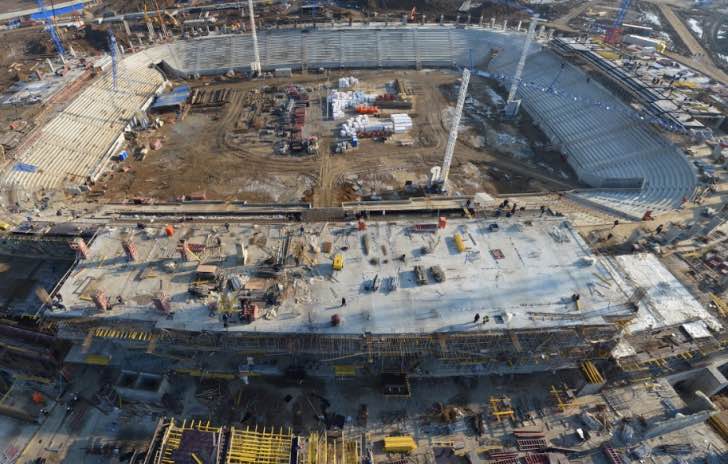
Mordovia Arena features a bowl of continuous seating that wraps around all sides of the pitch. It is split over two tiers, with executive boxes filling the gap between two of them. As mentioned in the introduction, the upper tier of seating will be removed after the World Cup.
Getting To Mordovia Arena
Train – If you wanted to get the train from London to then you’d end up travelling for about two and a half days. However you get there you’ll find yourself in a relatively small city, with the main train station being around a thirty minute walk away if you’re going a sedate pace.
Bus – Bus number 44 is the one that runs closest to the ground, so that’s the one you’ll want to keep your eye out for. It’s highly likely that special buses will be put on for the during of the World Cup, so you’ll almost certainly be able to jump on one of them if needs be.
Car – The Arena is located in between the R-178 and the R-179, so in terms of main roads they’re the ones to head towards. If you’re driving, though, you’d do well to get a sat-nav or use the built in navigation system on your mobile.
By Air – Saransk Airport is less than ten miles from the city centre, but it’s only for domestic flights. The closest international airport is Nizhny Novgorod International Airport, which is more than two hundred and fifty miles away.
Taxi – As mentioned before, Saransk isn’t the largest city in Russia. You can walking to most places, but a taxi from the centre to the group will cost you about 175 rubles and will take less than fifteen minutes to complete its journey.
Parking Near Mordovia Arena
The footprint of the area around the stadium that is being redeveloped is quite large, so it wouldn’t be a major surprise to see car parking including in the building plans. We’ll update this section when that’s been confirmed.
Useful Resources
Mordovia Arena Hotels
It’s fair to say that, at the time of writing, hotel options in Saransk are limited. They also range from the sublime to the ridiculous, or, at the very least, from the superb to the budget. Here’s some more information on the three hotels that you can currently book:
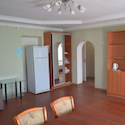
Rassvet - £10+
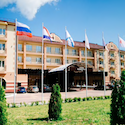
Admiral Hotel - £50+
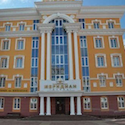
Meridian Hotel Saransk - £140+
Pubs and Bars Near Mordovia Arena
Trattoria Parmigiano
Pub SV
Rozmarin
Hospitality
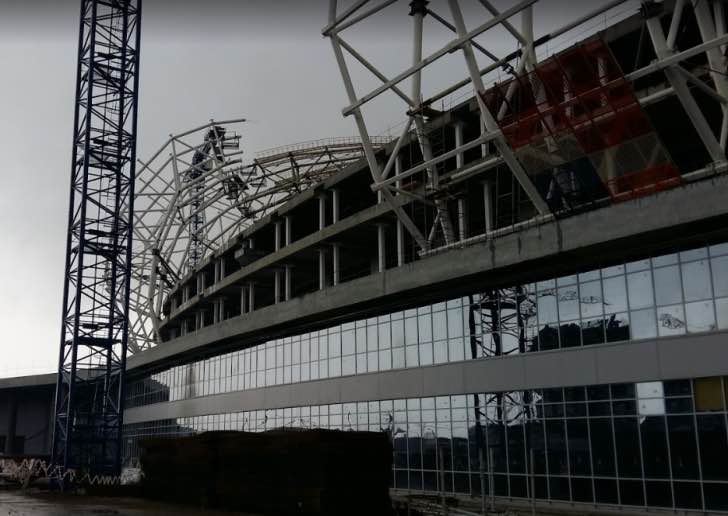
Just as FIFA are particular about how many seats a venue has to have in order to be good enough to host major tournaments, so too are there specific requirements regarding hospitality. Given the amount of money and effort put into the construction of Mordovia Arena, it’s not a wild statement to say that the hospitality facilities are as good as you can get.
Private Hire
As with the tours, we don’t know for certain whether or not Mordovia Saransk will allow the use of the facilities at Mordovia Arena by private companies and groups. Most clubs with top-class facilities allow it as it’s a good money-making scheme, so if they don’t we’d be very surprised.
Stadium Tours & Museum
At the time of writing, we have no idea whether or not Mordovia Saransk, the team that will move into the ground after the World Cup, will allow stadium tours. Once we do know we’ll update this section accordingly.
Mordovia Arena History
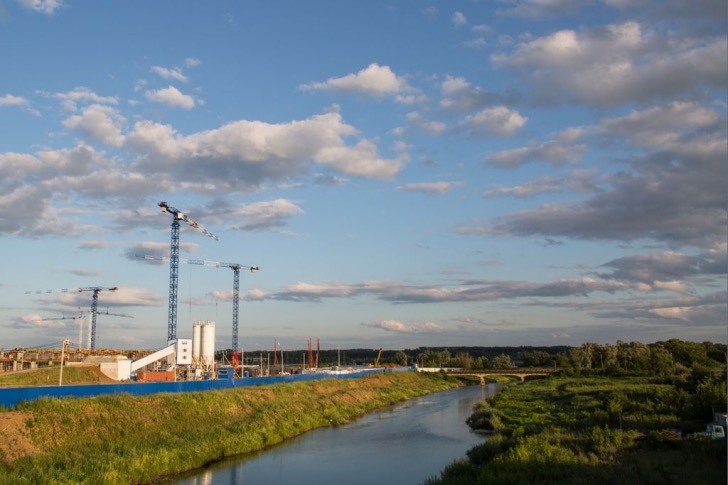
The building of the stadium began in 2010, the year that coincided with the 1000th anniversary of the people of Mordovia being united with the rest of Russia. Its design takes on a somewhat simplistic bowl shape, created by SaranskGrazhdanProekt after an initial temporary idea by the German architect Tim Hupe. It will be used to host four Group Stage matches during the 2018 World Cup. These include a game from Group B, one from Group C, another from Group G and finally a Group H match.
In terms of host cities, Saransk is the smallest of all of those chosen. That doesn’t mean that it won’t be a good host city, however. As well as building a new football ground in the area, a new airport has also been constructed nearly to cope with the influx of supporters arriving for the World Cup. The outside of the stadium itself is made out of one-sheet of perforated metal and is covered with bright colours, symbolising the sun. Interestingly, the turf for the pitch was important from Canada and heated by thirty-seven kilometres of undersoil heating.
Future Developments
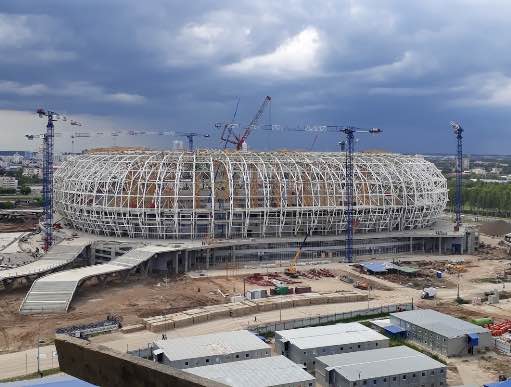
The plan is to reduce its capacity down from 44,000 plus to around the 28,000 mark, with shops and leisure facilities replacing the seating that’s due to be removed. At that point Mordovia Saransk, the lower league Russian side, will move in to use it as their new home. It’s not unfair to say that they’ll be flattered be the ground, given that their usual average attendance is around the two-thousand mark.
